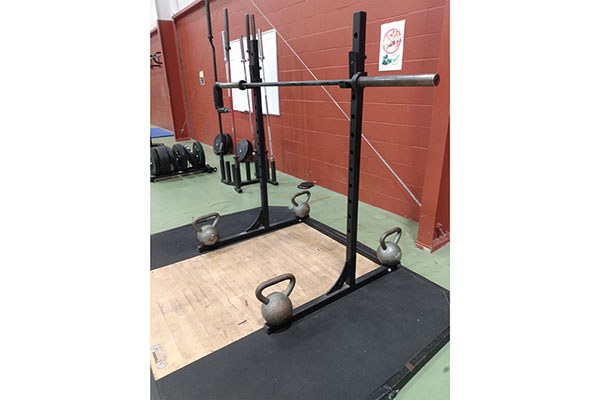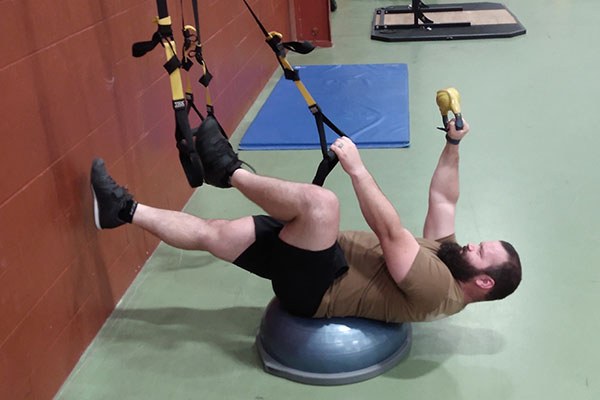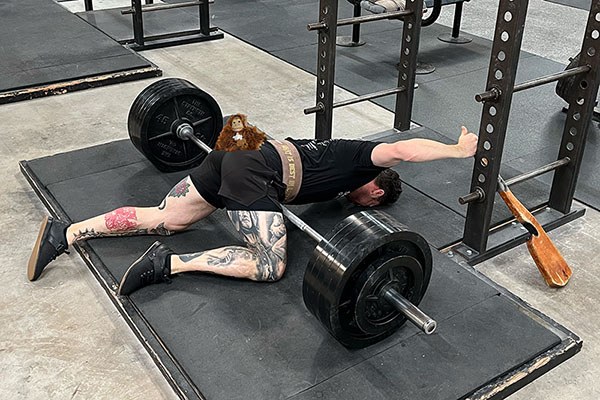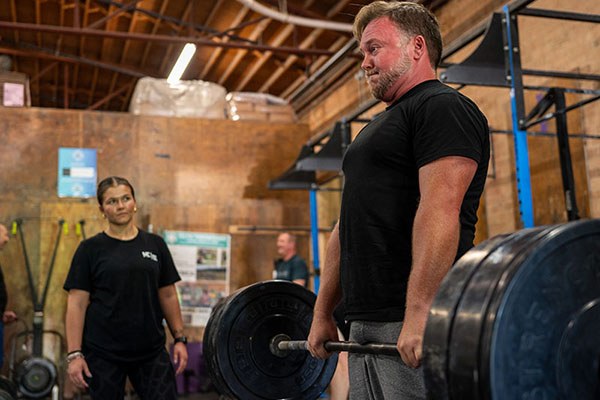The kettlebell is a common piece of gym
equipment. For most of you, your ongoing experience with kettlebells
is tripping over them while making your way to the squat rack or the
platform. Except for novices, they do not have much value when it
comes to getting stronger, since barbells are the superior tool for
strength training due to their ergonomics and incremental loading.
This prompts the question: what can you do with the set that you
bought during COVID, still sitting in your garage in pristine
condition? To help you out, the following will be my humble attempt
to keep the materials and heat energy that went into making those
kettlebells from going completely to waste. A kettlebell is mostly useless,
but not completely useless. Here is a helpful list of things that you
can use kettlebells for to enhance your strength training.
How
To Prop Up Your Phone With a Kettlebell
Use a small kettlebell to prop up your
phone to record your sets. An amazing advance in technology over the
last fifteen years or so has been the transformation of the cell
phone into a pocket computer with wireless internet and video
recording device. This has a few implications for people who are
training for strength. Use a kettlebell to prop up your phone to
record lifts at an appropriate angle and submit the videos to a coach for review, regardless of
geographic or scheduling constraints.
For example, I have coached someone in
Yellowknife, North-West Territories while in my home located in
Fredericton, New Brunswick. Those two places are about 5,800km apart
by road, so remote video coaching is advantageous. Something that
secures the camera is essential to make all of this possible, since a
smart phone will not stand up on its end all by itself. The
kettlebell’s flat bottom, smooth rounded surfaces, mass and
convenient handle make it a versatile prop for resting your phone
against while you do your fives.
Using
Kettlebells to Hold Down a Squat Stand
Use heavy kettlebells to weigh down
loose squat racks. The optimal squat rack is one that is bolted to
the floor or to the platform. Unfortunately, that is not always
available, so you are faced with the situation of dealing with a
squat stand that can move around on a platform. One thing that you
can do to make it less of a bad deal is to put something heavy on the
legs to keep the thing from moving around when you’re unracking and
racking the weights. Once again the kettlebell’s benign mass and
favorable geometry will come to the rescue. The large kettlebell’s
spherical shape, flat bottom and chunky handle mean that there is a
fair bit of mass (and resultant weight) that can be concentrated over
a single point, making is more efficient for holding down the legs of
the mobile squat rack without taking up that much floor space.

Use
a Kettlebell for Companionship
I have named this one “Lalo.”
Strength training can require you to take a really long time resting
which means that you’re going to be sitting around a lot. Long rest
periods are important because the intent of the program is to add
weight to the bar as fast as possible for as long as possible. The
downside of this approach is that you can spend a lot of time waiting
around in between sets, and during this time your mind can… wander.
A psychologically healthy thing to do is to get someone to talk to,
but since there is a good chance that you’re doing this all on your
own, and are already sort of a weirdo, the logical thing to do is to
make a new friend out of a kettlebell. Feel free to dress yours up
with a face if you want. Your new kettlebell friend will never wander
off, get bored or ask you how many sets you have left, because it is
a chunk of metal. Be warned that if it starts talking back to you,
seek help.

Kettlebells
Make Excellent Focal Points
Use brightly colored kettlebells as
focal points when doing your squats, deadlifts, cleans and snatches.
A very important part of training for strength is remaining balanced.
This lets you execute the lifts in the most mechanically efficient
manner possible, enabling the use of the heaviest weight which
elicits the greatest strength adaptation. When lifting there is a
temptation to look around, which diminishes the contribution that
vision makes to staying balanced. Using a brightly colored kettlebell
to concentrate on fixes this, since the lifter will be looking at a
high-contrast object that is close by on the floor. Gaze direction is
also important in the squat and the pulls because the gaze determines
head position which affects the torso angle.
Use the Kettlebell to Make the Weak-Willed and Lazy Leave the Squat Rack
To train properly, you will need the proper equipment. There will be a limited number of squat racks and benches available at commercial gyms, since those things are used by people who train seriously, and people who show up to train seriously don’t make commercial gyms money. However, if you’re okay with being dishonest to prey on the weak-willed and lazy, tell the person on the rack that he doesn’t need to do hard stuff like squats and bench presses to get big and strong, the secret is to use Perislavitch Tzerinyoukostautchis’ forbidden Bashkortostani kettlebell routine to quadruple barometric workflow output. Demonstrate a few exotic moves to entice the weak-willed and lazy into leaving the squat rack so you can do some actual work.

Some
Money is Better Than No Money
Sell your kettlebells to offset the
cost of buying a proper home gym. I am sure that almost everyone has
a few of these things.. The good news is that there are people
willing to buy these things. Selling your kettlebells won’t
pay for a set of quality equipment, but it will cover some of the sales
tax.
In short: kettlebells are mostly
useless, but not completely useless. Just mostly useless.



